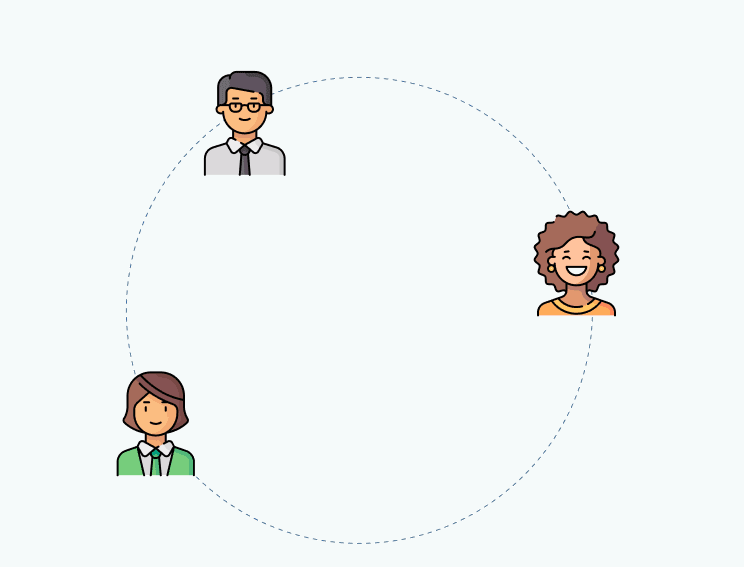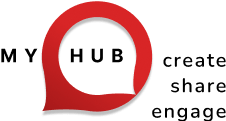
Your New Intranet Starts Here
Streamline communication, boost collaboration, and empower your team with MyHub's intuitive intranet solution.
Book a live demo now and experience the difference.
Take a Quick TourBreakups are never easy, and the same applies in the workplace. However, employee turnover is inevitable, and how you manage the offboarding process directly impacts your existing team and your brand’s reputation. While many companies have solid onboarding procedures, offboarding is often neglected or handled inconsistently. Without a structured offboarding process, crucial steps can be missed, sometimes with costly consequences. For example, a subway cleaner continued receiving $250k in paychecks after being fired. Clearly, robust offboarding policies can help protect your business from similar risks.
This post answers all your key questions for ensuring a smooth offboarding experience, such as:
- What does offboarding mean?
- What happens during the offboarding process?
- How do you successfully offboard an employee?
- What should be included in a comprehensive offboarding plan?
We’ve also included a downloadable and customizable offboarding checklist to streamline your workflow.
What Is Offboarding?
Offboarding marks the final phase in the employee lifecycle. It encompasses the procedures a company follows when an employee departs, whether due to resignation, termination, or retirement. A typical offboarding process includes:
- Returning company assets such as laptops, mobile devices, and access badges
- Deactivating or transferring access to company software and accounts
- Removing the individual from the payroll system
- Ensuring knowledge transfer to current team members
- Updating the employee directory and company website
- Conducting a thorough exit interview
When done correctly, offboarding leaves no loose ends, prevents unauthorized access, and ensures organizational knowledge is preserved. Done poorly, it opens your business to serious risks, including data breaches and PR nightmares.
Why Offboarding Matters
1. Improve Your Employer Brand
Former employees remain valuable brand ambassadors. They might share their experiences with family, friends, or hundreds of professional connections on platforms like LinkedIn. A positive offboarding experience leads to favorable word-of-mouth, enhancing your employer’s reputation.
Additionally, ex-employees often stay on as customers, reflecting loyalty and trust in your brand. And let’s not forget the increasing trend of boomerang employees: workers who return after leaving. According to Workplace Trends, 15% of employees return to a former employer, and 40% would consider it. A professional, respectful offboarding process keeps that door open.
2. Effective Transfer Of Knowledge
When an employee leaves, they take years of experience and institutional knowledge with them. Without a plan to capture and share this information, your business may suffer a serious loss in efficiency and productivity. This is especially important in the wake of large workforce changes, such as during the Great Resignation, which still affects global retention trends.
A strategic offboarding process supports knowledge management and ensures operational continuity. It also shortens the onboarding time for replacements and keeps the momentum going within teams.
3. Honest And Helpful Feedback
The exit interview is a powerful tool that provides candid insights into your organizational strengths and weaknesses. Departing employees often feel more comfortable sharing open and honest feedback that current employees might withhold.
Use this feedback to enhance your workplace culture, address issues, and refine policies. Whether it’s about leadership, team dynamics, or growth opportunities, these insights can help you proactively reduce future turnover.
Here are a few useful questions to include in your exit interviews:
- Did the role meet your expectations?
- Were the tools and support adequate for your job?
- What could we have done better during your time here?
- How was your relationship with your manager?
- What might have convinced you to stay?
- Would you recommend our company as a great workplace?
To gain the most value, have someone neutral, like an HR rep, conduct the interview. And most importantly, take action based on what you learn.
4. Reduces Risk
Data security is one of the most critical concerns during offboarding. According to a recent study, 40% of departing employees take company data with them, often unintentionally. This risk increases when employees use personal devices for work or mistakenly assume ownership of certain files.
Worse still, some disgruntled ex-workers intentionally retain access to internal systems, which opens the door to potential breaches. A survey shows that one-third of ex-employees still have system access after leaving. That’s a huge threat to your organization’s privacy, compliance, and integrity.
Effective offboarding procedures, such as revoking credentials, deactivating email accounts, and updating shared passwords, are essential to protect your digital infrastructure and reduce organizational risk.
Offboarding Best Practices: Customizable Checklist
There’s a lot more to offboarding than perhaps you first realized. Creating a checklist to ensure you don’t miss a vital step is one easily implemented best practice.
And we have developed this sample checklist to get you started. Our customizable checklist includes all the critical offboarding best practices. And you can add any additional steps relevant to your organization.
| Offboarding Main Task | Specific Actions | Responsibility For Completion | Date Completed |
| Payroll & Paperwork | Process resignation letter or termination notice | ||
| Notify payroll of the last day of employment | |||
| Tie up any loose ends in payroll, e.g., outstanding leave, severance package, unpaid commission | |||
| Prepare non-disclosure or non-compete agreements if appropriate | |||
| Prepare benefits documents, including healthcare benefits, retirement plans | |||
| Notify the team, wider organization, and any external contacts of employee’s departure | |||
| Update organizational charts | |||
| Set up interim cover arrangements | |||
| Issue final paycheck | |||
| Knowledge Transfer | Create a list of main tasks with step-by-step instructions if needed | ||
| Identify a list of internal or external contacts the employee works with | |||
| Outgoing staffer prepares status updates on current or future projects with priority tasks identified | |||
| Arrange for current employee to train colleagues in any systems or processes involved in the job | |||
| If possible, arrange for a handover to the new replacement | |||
| Exit Interview | Arrange exit interview to be led by HR or a neutral manager if possible | ||
| Ask about areas the company could improve | |||
| Discuss employees’ views on resources and support while in the job | |||
| Record the feedback and share any crucial insights with management and HR | |||
| Company Assets | Recover company assets, including:
o ID badges o Company credit cards o Laptops o Mobiles o Uniforms o Company car o Parking permits o Keys |
||
| Ensure departing worker clears their workstation of personal items | |||
| Reset Systems Access | Remove access to company email | ||
| Delete user accounts on other enterprise apps or internal systems, including:
o Intranet o CRM o Social media o Company databases |
|||
| Change passwords on any shared access workflows, databases, or apps, e.g., DropBox | |||
| Redirect emails or phone calls to a new contact | |||
| Say Thank You | Provide reference letter or certificate of service | ||
| Write a thank-you note | |||
| Get colleagues to sign a farewell card | |||
| Throw a leaving do or have a shared lunch to farewell the colleague |
You can download this checklist here: Employee Offboarding Checklist.pdf
Remote Employee Offboarding
To wrap things up, a word about remote offboarding. Up to 45 percent of US workers now work remotely, either full or part-time. This means that offboarding remote employees has become a regular occurrence for many organizations, especially in hybrid and distributed workplaces. While the steps in our offboarding checklist apply broadly, there are some unique challenges to consider.
For instance, knowledge transfer and final project handovers can be more complicated when the departing employee is working off-site. To overcome this, implement frequent check-ins leading up to the departure date. These regular touchpoints help facilitate a smoother transition and provide remote workers with a vital human connection during their final days.
Additionally, returning company assets, like laptops, mobile devices, or ID cards, can be logistically tricky if the employee lives in another city or state. Ensure your policy clearly outlines expectations, including packaging instructions and prepaid shipping labels for returning hardware via courier or secure mail.
Cybersecurity is another concern when remote or hybrid workers use personal devices for work. You must provide detailed guidance on removing sensitive data from local drives and unlinking personal apps or devices from corporate systems. Failing to do so could expose your organization to privacy risks and data breaches.
Main Takeaways
When it comes to the employee lifecycle, onboarding often steals the spotlight, and rightly so. Giving new hires a great start is important. However, employee offboarding is equally critical to your business success and security strategy.
A structured offboarding process minimizes serious risks such as data breaches and ongoing payroll errors. Such missteps can harm your company’s image, damage customer trust, and result in legal consequences or financial loss. A well-managed offboarding also helps preserve intellectual capital and ensures compliance with internal protocols.
Furthermore, a consistent process benefits your existing team. It ensures seamless knowledge transfer, minimizes workplace disruption, and reassures your workforce that the company cares about employees throughout their entire journey, from onboarding to exit. This comprehensive approach positively impacts morale, loyalty, and staff retention.
If you haven’t reviewed your offboarding procedures recently, now is the perfect time. Use our detailed checklist and best practices to implement a modern, risk-aware offboarding strategy that supports both business continuity and company culture.
About MyHub
MyHub Intranet is a leading provider of cloud-based intranet solutions. For over 20 years, we’ve helped companies of all sizes design engaging, easy-to-use intranet platforms that boost productivity and employee experience.
Our intranet software is packed with customizable features to connect your workforce to critical information, streamline internal processes, and foster team work, whether they’re in the office or working remotely.
Discover how MyHub can improve your internal communications and HR processes with a free demo or sign up for a 14-day trial today.
FAQ Section
What is employee offboarding?
Employee offboarding is the structured process of managing an employee’s departure from a company. It encompasses tasks such as knowledge transfer, revoking system access, returning company assets, and conducting exit interviews to ensure a smooth transition.
Why is a formal offboarding process important?
A formal offboarding process helps protect the organization from security risks, ensures compliance with legal requirements, preserves institutional knowledge, and maintains a positive relationship with departing employees.
How can MyHub assist with employee offboarding?
MyHub offers customizable intranet solutions that facilitate the offboarding process by providing tools for task management, documentation, and communication, ensuring all steps are completed efficiently and consistently.


